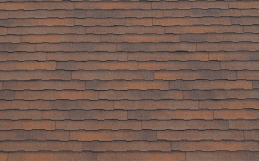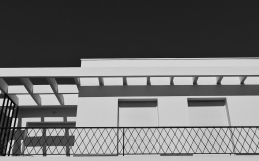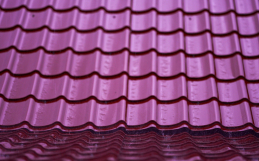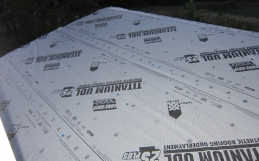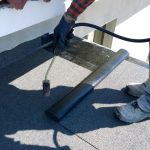Ever walk around a major city during a rainstorm and wonder why water doesn’t just come cascading down from the top of skyscrapers? The roofs are flat after all. But they’re also designed to deal with the amount of water – or melted snow and ice depending on location – that falls from the sky.
By installing water retention systems in the roof and throughout the building, passersby are saved from getting even more drenched for an entire city block. Much like a busy city street uses storm drains to keep standing water off the road, there are systems in place to do the same for the water on the roof.
These types of roofs aren’t designed to just take care of stormwater, though. They can even be designed to take advantage of the rain. Many cities are implementing roof-top gardens and retention units to use the precipitation to keep them watered. This keeps the water from stressing storm drains that are busy enough as it is.
Some homes have flat roofs that slope to one side or away from the middle. The water flows through holes in small walls on the roof (parapets) to gutters as part of a roof drainage system. During torrential downpours, the gutter system may overflow a little, especially if they aren’t clean.
Now imagine a 30-story tall building leaking from each side during heavy rain. That could cause some major issues below. Time also needs to be spent making sure the parapet holes are clear and gutters clean. For these reasons, skyscraper roofs slope to the middle into one large drain.
This eliminates any gutter cleaning, although the drain does need to be maintained. This water can either be led to a wastewater system or even filtered and used for non-potable water within the building. It’s a time saver and helps lower water costs.
Why do tall buildings have flat roofs?
Look at the skyline of any city and you’ll notice most of the commercial buildings have flat roofs. There is actually more than one reason for this, dealing either with cost or efficiency. In some cases, there may be jurisdictional codes that prevent buildings from being a certain height. There are examples where tall buildings don’t have flat roofs, but that’s more for the design than anything else.
Cost
Simply put, flat roofing costs less than peaked or pitched roofing. With trusses, decking, underlayment, and finally the roofing material itself, the cost can double or triple with materials alone. Residential roofs can be pitched because the cost increase is negligible. On buildings that take up a city block, it’s much much more.
Efficiency
These buildings also need ventilation systems, air conditioners, and other mechanical equipment. Often, there is no room around the base of the building and inside square footage is at a premium. A flat roof is perfect for this equipment: Easy to access, maintain, and is out of the way.
Building codes
Almost every major city has limits to the size of their industrial, manufacturing, or commercial buildings. If you’re looking for more square footage in your building, why waste any height on a sloped roof that could equal two or three more floors? An antenna placed at the top of the roof is even taken into account.
There are skyscrapers with sloped roofs, however. This is usually done as part of an architectural design or an aesthetic look. In these cases, a water dispersal system must be engineered to handle all rain, snow, and ice that may happen throughout the year.
When it comes to residential homes, there are both pros and cons for pitched and flat roofs. Depending on the roof surface, pitched roofs are better for the long term. Many roofing options last for more than 30 years – metal roofs can even push one hundred years.
Roofing membranes for flat roofs are lucky to last 20 years before being replaced. However, as mentioned above, these roofs can add extra living space to the home and are cheaper to install. Regardless of the building – from a two-bedroom craftsman to a skyscraper – if the roof isn’t installed correctly, the building will experience problems with water damage.
Warner Roofing and Construction has been installing, re-roofing, and tearing off old roofs in Clark County since 1992. From steep pitches to flat roofs, we are able to maintain, repair, and service traditional asphalt shingles, composite slate, and more. We also install skylights, solar tubes, and gutters. Any questions about your roofing? Contact Warner Roofing and Construction today.

